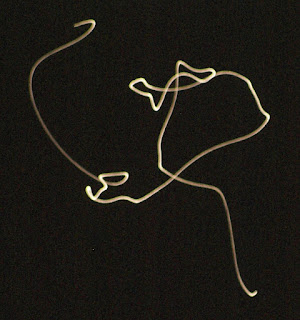We all know that stars twinkles, it is also easy to notice that stars twinkle more when they are low in the skies. The reason for all the twinkles is the Earth's atmosphere and winds which cause it. When the light comes from a star the air refracts it and make it changes in position a bit. Stars are so far always that they seems as a point and even the slightest change will cause them to twinkle. Planets also twinkle but much less since they are small disc and not tiny points (see more details
here).
I've learned about a great and simple technique to visualize the twinkling or in the more formal name "Scintillation" of stars. I learned it from
Monika Landy-Gyebnar, an Hungarian photographer who found it by mistake when she once accidentally kicker her tripod during star photography. Instead of deleting the photo she notices that the photo looks rather strange.Monika does not sure if she "invented" the method or just "rediscovered" it but the first
photos I saw of this method are her.
The technique is quite simple. Take a photograph of a star for about 2 minutes without using a tripod. Look at the result. The stars colors change dramatically. This is the scintillation at work! Do the same for a planet, the brightness might change, but not the color! I was very eager to try for myself. It works. Here is Arcturus.
 |
| Arcturus scintillation |
I even got a very nice photo for Spica.
 |
| Spica scintillation |
Notice how the color changes as different wavelengths of the light are refracted. For planets it doesn't happen. Here is Mars.
 |
| Mars - no scintillation |
Thanks Monika for sharing your technique with us!


